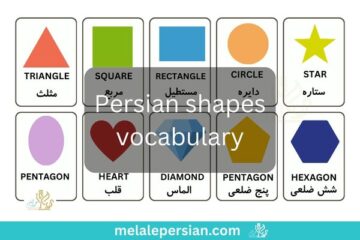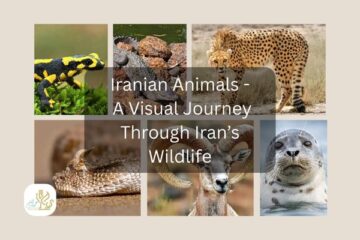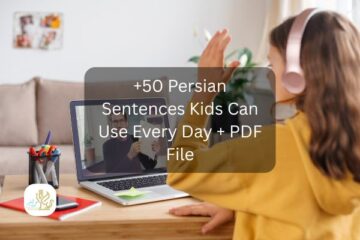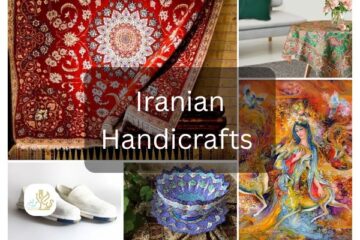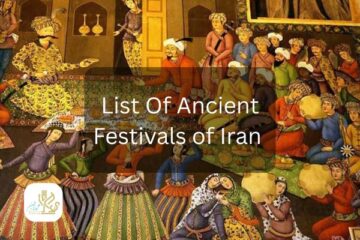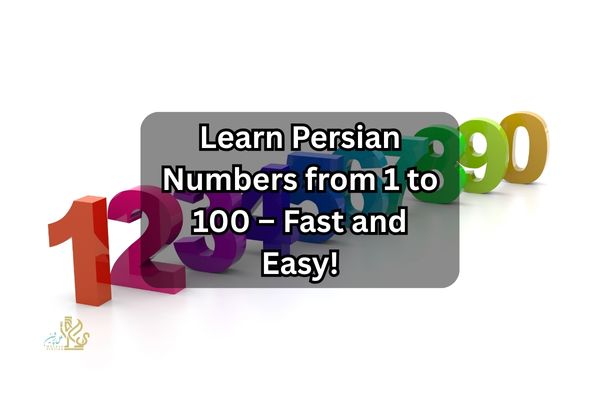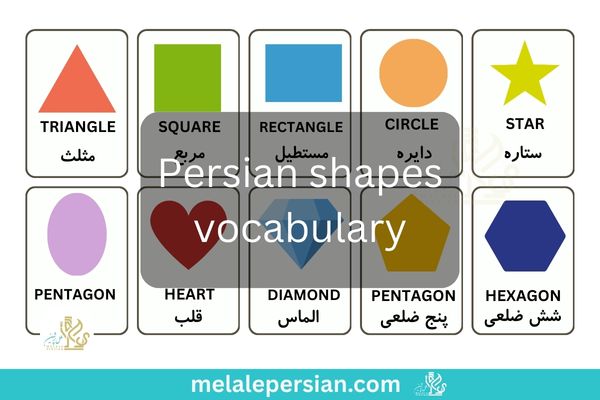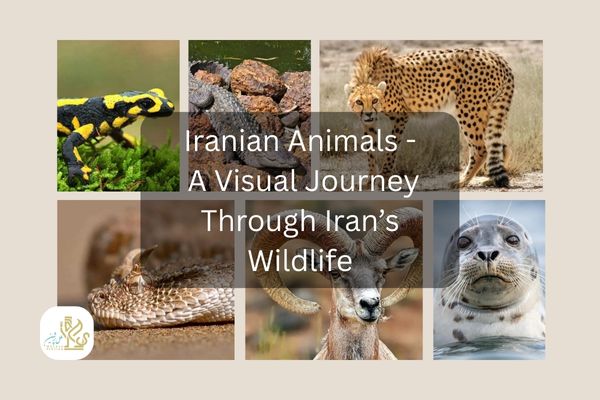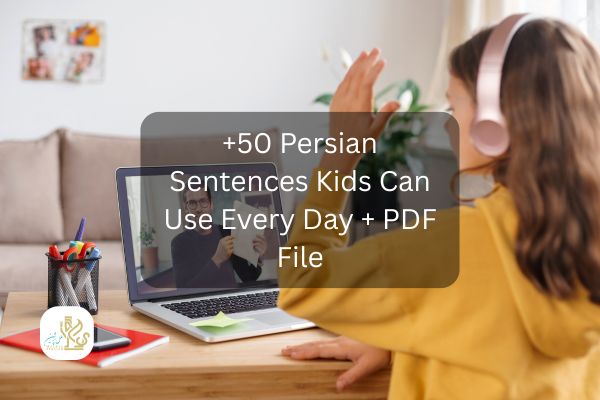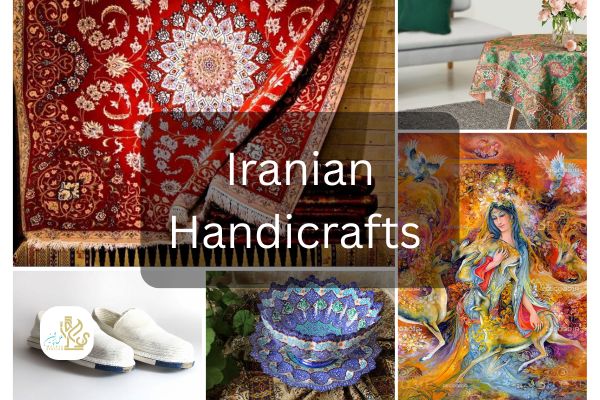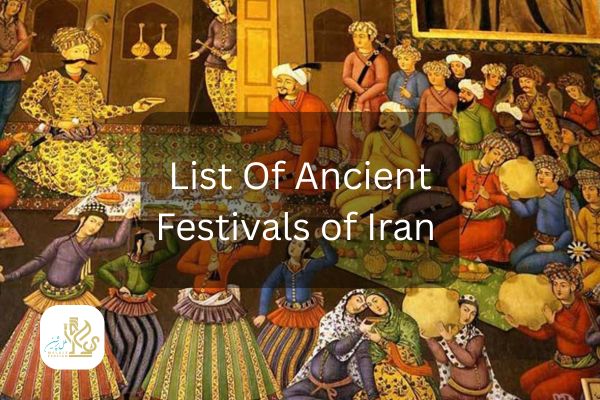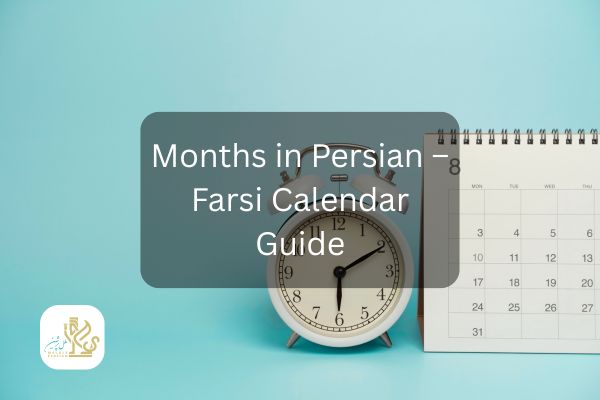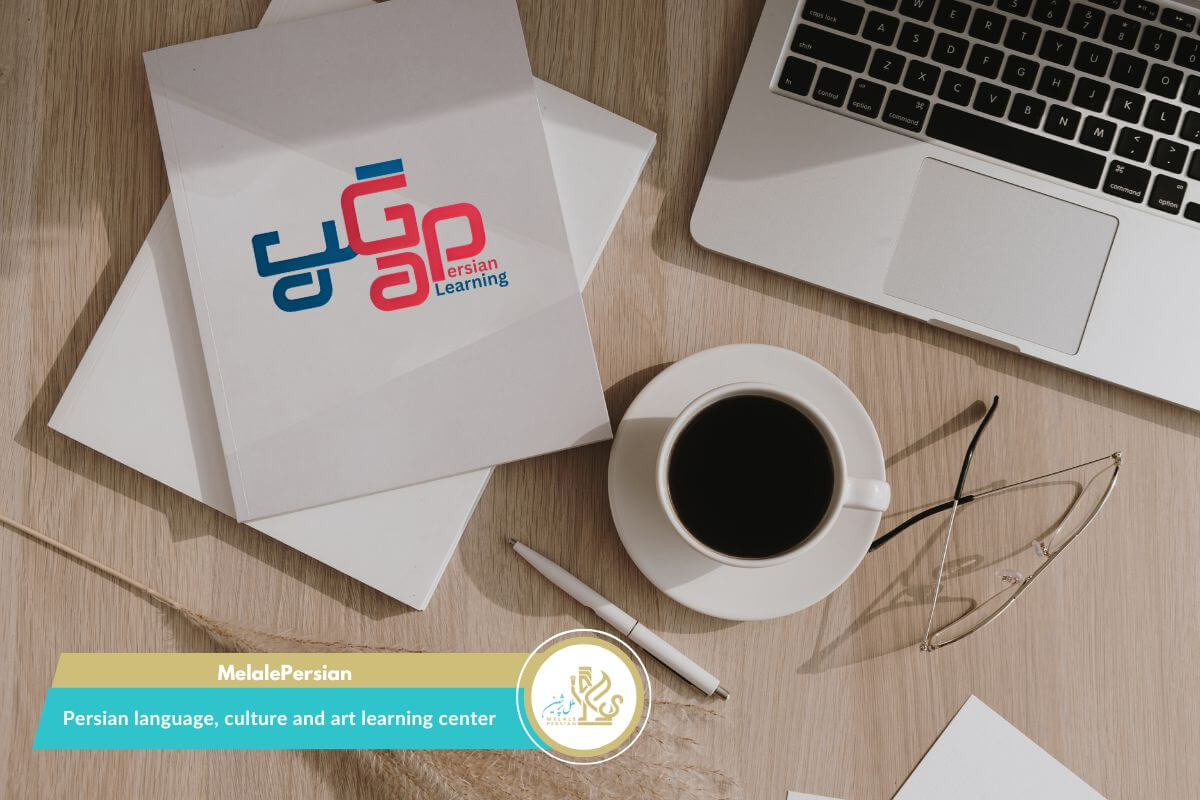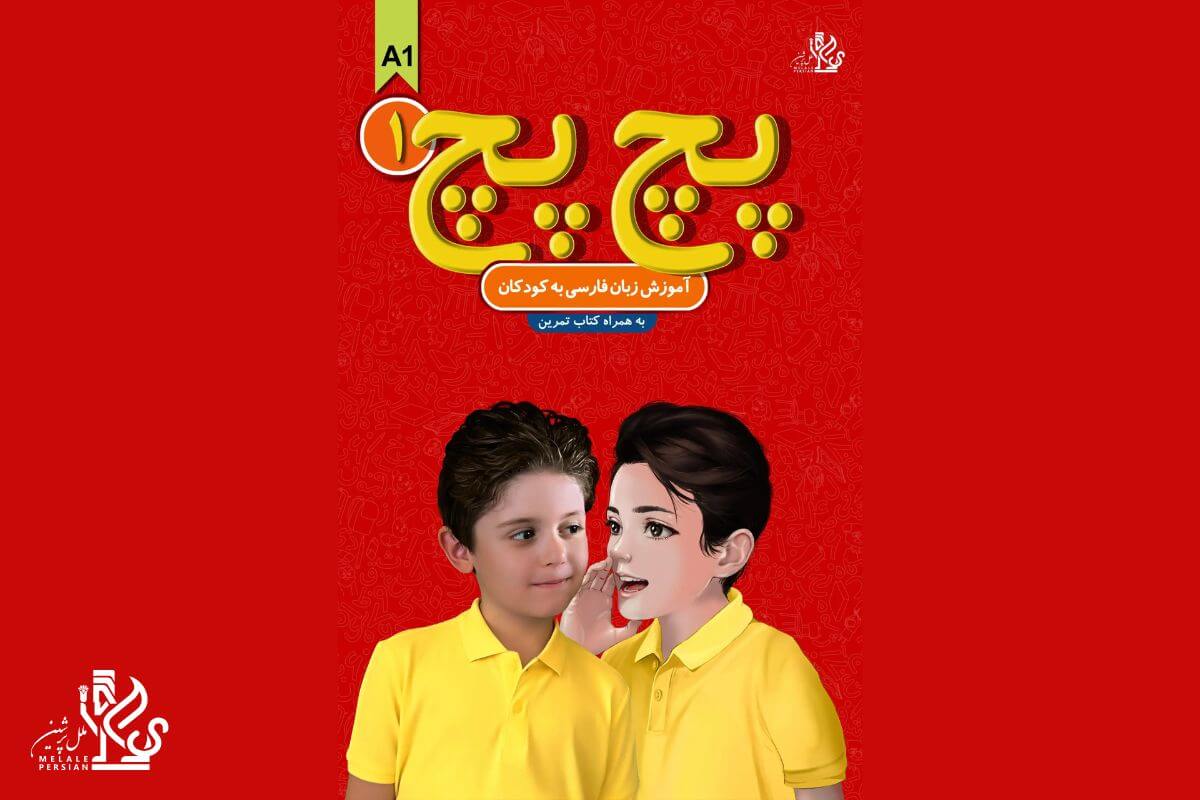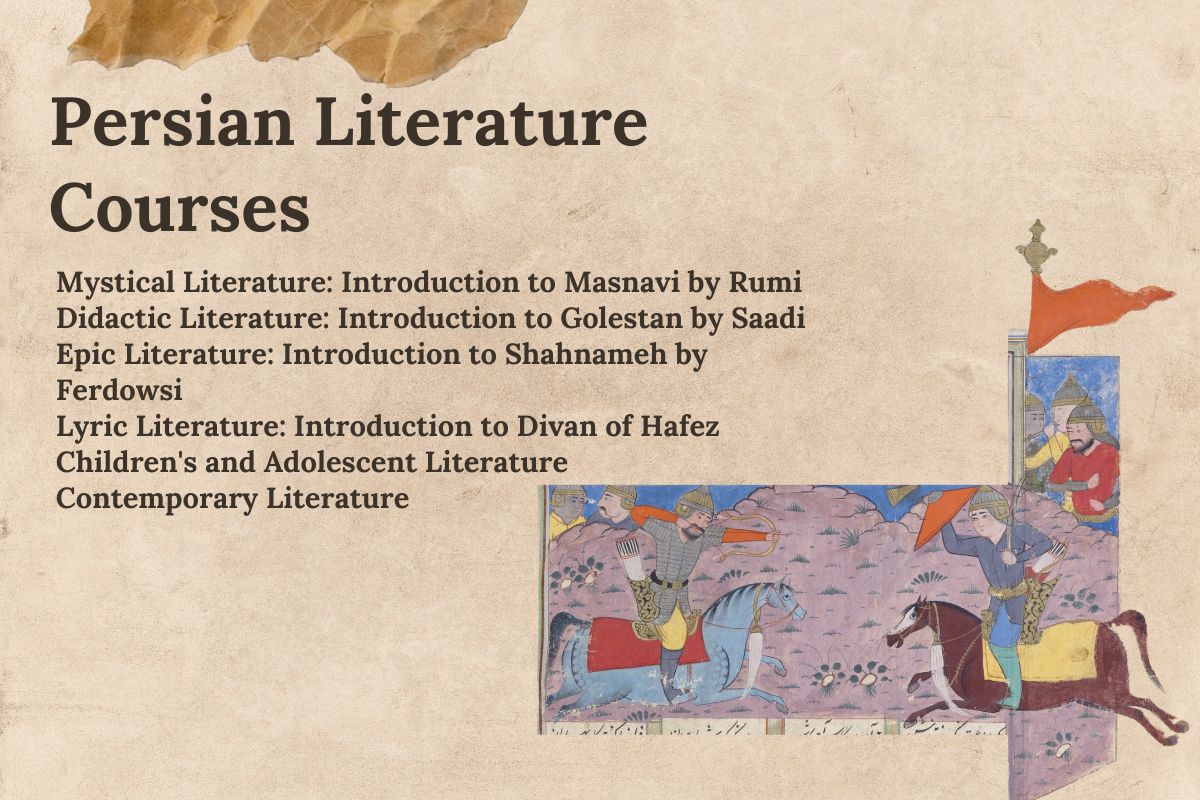What is the Nowruz Festival and Why is it Important?
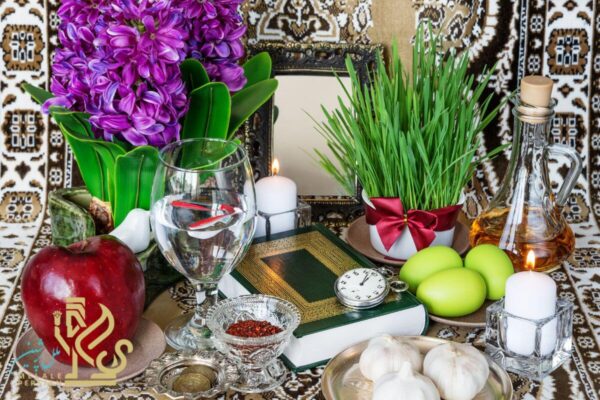
Nowruz Festival is an ancient celebration marking the beginning of the Persian New Year and the arrival of spring. Rooted in Zoroastrian traditions, this festival has been celebrated for over 3,000 years across various cultures, including Iran, Afghanistan, Central Asia, and parts of the Middle East. More than just a new year’s event, Nowruz symbolizes renewal, hope, and the triumph of light over darkness. Families gather, homes are cleaned, and special rituals are performed to welcome prosperity and happiness for the coming year. Today, millions of people worldwide continue to honor this timeless tradition with joy and unity.
Below, we will introduce you to the Nowruz celebration in full.
The Ancient Origins of Nowruz Festival
The Nowruz Festival dates back to Zoroastrian traditions in ancient Persia, long before Islamic influences. As an agricultural society, Persians celebrated spring’s arrival and nature’s renewal with grand festivities. Symbolism in Ancient Persia shaped Nowruz, representing light’s triumph over darkness and life’s rebirth. Recognized during Cyrus the Great’s reign (6th century BCE), it held spiritual significance, reflecting the cosmic battle between Ahura Mazda (good) and Ahriman (evil). Despite cultural shifts, Nowruz remains a pillar of Persian heritage, uniting people from the Caucasus to the Balkans and preserving its legacy today.
First Recorded Mentions of Nowruz
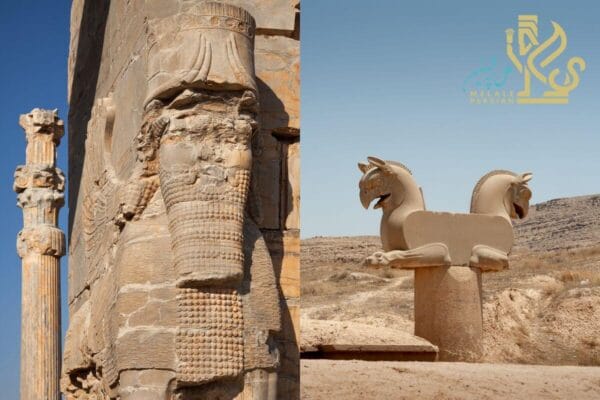
The Nowruz Festival has been celebrated for thousands of years, but its first recorded mentions date back to the Achaemenid Empire (550–330 BCE). Historians believe that Cyrus the Great, the founder of the Persian Empire, officially recognized Nowruz as an imperial festival, marking the beginning of the new year with grand celebrations across the empire.
One of the earliest references to Nowruz appears in Persepolis, the ceremonial capital of the Achaemenids, where inscriptions and stone carvings depict rulers receiving gifts from various parts of the empire during this time. This indicates that Nowruz was not only a seasonal celebration but also a political and cultural event, reinforcing the unity of the vast empire.
The festival continued through the Parthian and Sassanian dynasties, where it gained even more significance. Sassanian kings (224–651 CE) would hold elaborate ceremonies, granting pardons to prisoners and distributing gifts to the people. These traditions laid the foundation for the modern Nowruz Festival, which still symbolizes renewal, prosperity, and the arrival of spring.
Nowruz Festival 2025: When and How It’s Celebrated
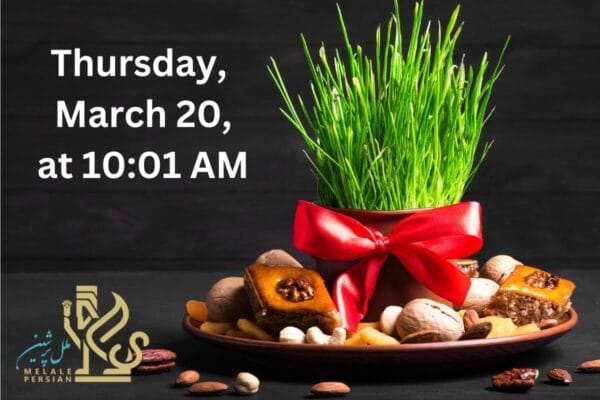
The Nowruz Festival 2025 will be celebrated on Thursday, March 20, at 10:01 AM. Marking the spring equinox, this ancient Persian New Year symbolizes renewal and new beginnings. Families prepare by cleaning homes, setting the haft-sin table, and gathering for festive meals. The celebrations continue for 13 days, ending with sizdah bedar, a day spent outdoors to embrace nature.
The Connection Between Nowruz and the Spring Equinox
The Nowruz Festival is deeply tied to the spring equinox, a celestial event marking the moment when day and night become equal. Unlike many cultural New Year celebrations that follow fixed calendars, Nowruz is calculated based on astronomical observations. This precise alignment with nature symbolizes balance, renewal, and the start of a new cycle. In ancient Persia, scholars and astronomers used advanced calculations to determine the exact second of the equinox, ensuring that Nowruz would always begin at the perfect moment of seasonal change. This connection makes Nowruz not just a festival but a cosmic event that reflects the harmony between humanity and the universe.
Nowruz Traditions & Customs: A Deep Dive
The Nowruz Festival is more than just the start of a new year; it is a time of deep-rooted traditions and vibrant celebrations that have been passed down for generations. From fire-jumping ceremonies to symbolic house cleaning and joyful outdoor gatherings, each ritual holds a special meaning in Persian culture. These customs reflect themes of renewal, purification, and unity, making Nowruz a festival that is not only celebrated in Iran but also in many parts of the world.
The Rituals of Nowruz Festival: From chahārshanbe suri to sizdah bedar
Nowruz traditions begin days before the actual Persian New Year and continue for nearly two weeks. These rituals symbolize letting go of the past and embracing new beginnings. Some of the most significant Nowruz customs include chahārshanbe suri (the fire-jumping festival), xāne tekāni (spring cleaning), and sizdah bedar (Nature Day). Each of these rituals carries historical, cultural, and even spiritual meanings that define the essence of Nowruz.
chahārshanbe suri – The Fire Jumping Festival
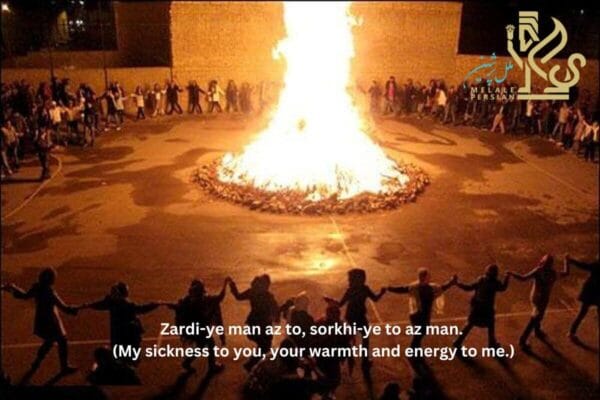
One of the most exciting pre-Nowruz celebrations is chahārshanbe suri, observed on the last Tuesday night before the Persian New Year. This ancient festival involves lighting small bonfires and jumping over the flames while chanting the famous Persian phrase:
“zardi-ye man az to, sorxi-ye to az man.”
(“My sickness to you, your warmth and energy to me.”)
This ritual symbolizes cleansing and renewal, transferring negativity and misfortune to the fire while embracing health, vitality, and good fortune for the coming year. The event is often accompanied by fireworks, street performances, and traditional snacks like ājil (mixed nuts) and āš rešte (Persian noodle soup).
xāne tekāni – The Persian Spring Cleaning Tradition

Another essential Nowruz tradition is xāne tekāni, which translates to “shaking the house.” This practice involves deep cleaning homes, replacing old items, and preparing the household for a fresh start. Persian families wash carpets, clean windows, declutter their homes, and even buy new clothes to welcome the new year with purity and positivity.
xāne tekāni is deeply connected to the symbolism of Nowruz, emphasizing purification, renewal, and prosperity. The idea is to remove any lingering negativity from the past year and create a space filled with good energy and blessings.
sizdah bedar – The Final Day of Nowruz Festivities
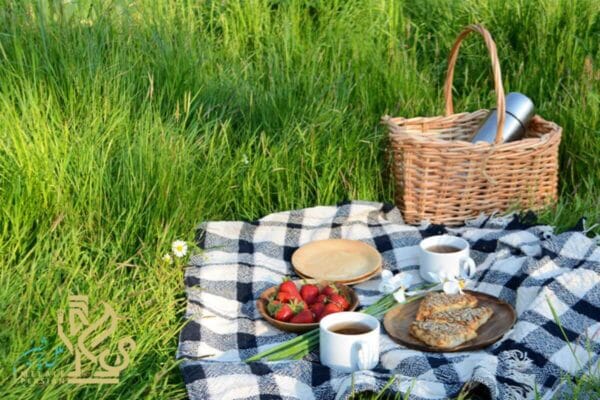
The 13th day of Nowruz, known as sizdah bedar, is a special occasion where families and friends head outdoors for a day of nature, picnicking, and socializing. The number 13 is traditionally considered unlucky, so spending the day outside is believed to ward off misfortune and start the new year on a positive note.
A key Nowruz Festival tradition on this day is throwing sabze (sprouted wheat or lentils) into a river or stream. This symbolizes letting go of the past year’s bad luck and embracing renewal and prosperity. sizdah bedar is a time of joy, laughter, and relaxation, bringing an energetic close to the extended Nowruz celebrations.
Visiting Family and Friends: The Spirit of Nowruz Festival
One of the most cherished traditions of the Nowruz Festival is visiting family and friends, reinforcing the values of unity, love, and renewal. During the 13-day celebration, people gather to exchange good wishes, share meals, and strengthen bonds. The first visits are traditionally made to the eldest members of the family, showing respect and gratitude. Hosts offer sweets, nuts, and tea, symbolizing hospitality and warmth. These visits reflect the deep cultural roots of Nowruz, emphasizing connection, forgiveness, and fresh beginnings for the new year.
Nowruz Festival Around the World: Global Celebrations
The Nowruz Festival is not just limited to Iran—it is a global celebration observed by millions across different cultures. Recognized as an ancient tradition that transcends borders, Nowruz is a time for renewal, joy, and togetherness. Various countries have their own unique customs, but the essence of welcoming the new year remains the same.
Countries That Celebrate Nowruz
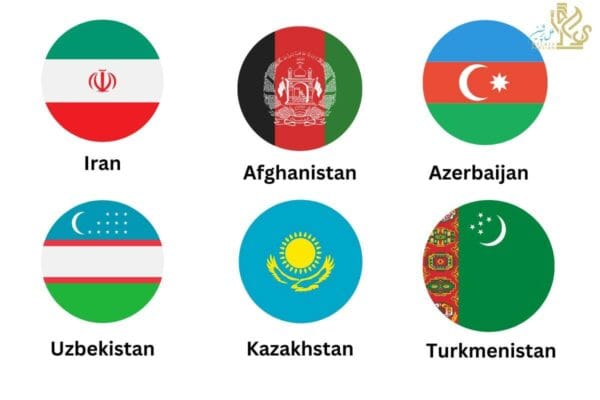
Nowruz is officially celebrated in Iran, Afghanistan, Azerbaijan, Turkey, Central Asian nations (such as Uzbekistan, Kazakhstan, and Turkmenistan), and parts of the Middle East and South Asia. The festival has also gained recognition in diaspora communities worldwide, with events held in cities across Europe, North America, and beyond.
Differences and Similarities in Nowruz Celebrations
While the core traditions—such as the haft-sin table, family gatherings, and symbolic rituals—are widely shared, different regions add their own cultural influences. For example, in Afghanistan, families prepare a special dish called “Haft Mewa,” while in Azerbaijan, people bake pastries like “Shekerbura.” Despite these variations, the unifying theme of Nowruz Festival remains the same: celebrating new beginnings with joy, gratitude, and hope.
The Symbolism of haft-sin: The Heart of Nowruz Festival
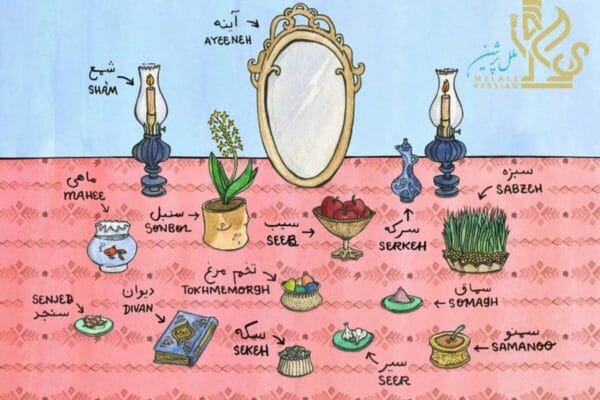
One of the most iconic elements of the Nowruz Festival is the haft-sin table, a beautifully arranged display of symbolic items. Each element on the table represents a specific wish for the new year, emphasizing themes of growth, prosperity, health, and happiness.
What is haft-sin?
haft-sin, meaning “Seven S’s,” is a traditional Nowruz arrangement consisting of seven items that start with the Persian letter “S” (س). These symbolic elements each carry deep cultural and spiritual significance, reflecting the essence of the Nowruz Festival.
The Meaning Behind Each Item on the haft-sin Table
sabze – Sprouts Representing Rebirth
Wheat, barley, or lentil sprouts grown in a dish, symbolizing renewal and the cycle of life.
samanu – Sweet Pudding for Strength and Power
A nutritious wheat-based pudding, representing patience, resilience, and abundance.
senjed – Dried Oleaster for Love and Wisdom
The dried fruit of the lotus tree, symbolizing love and wisdom in Persian culture.
sir – Garlic for Protection and Health
Garlic is believed to have medicinal properties, offering protection against illness and evil.
sib – Apple for Beauty and Good Health
A symbol of health, beauty, and vitality, representing a fresh start.
somāq – Sumac for the Sunrise and Patience
This spice symbolizes the color of sunrise and teaches patience for the year ahead.
serke – Vinegar for Aging and Wisdom
Vinegar represents maturity, patience, and the passage of time, reminding people of life’s lessons.
These seven items, along with other optional decorative elements, make Haft-Seen the heart of the Nowruz Festival, embodying the hopes and blessings for a prosperous new year.
Nowruz Cuisine: Traditional Foods You Must Try
Food plays a major role in the Nowruz Festival, with special dishes symbolizing prosperity, renewal, and good fortune. These meals are carefully prepared and enjoyed with family, adding to the festive spirit of the new year.
sabzi polo bā māhi – The Signature Nowruz Dish
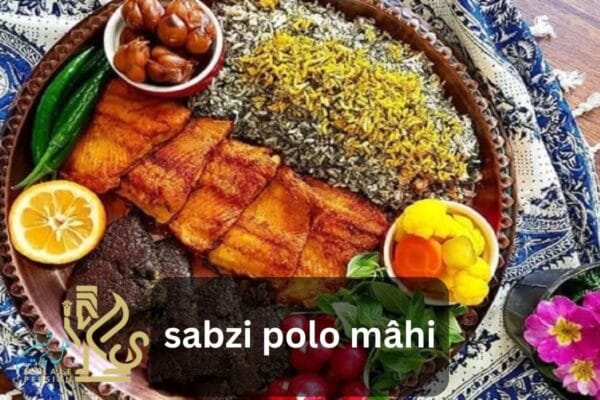
A beloved Nowruz dish, sabzi polo bā māhi consists of herb-infused rice served with fried or grilled fish. It represents purity and rebirth, aligning with the themes of the Persian New Year.
kuku sabzi, rešte polo, and Other Festive Dishes
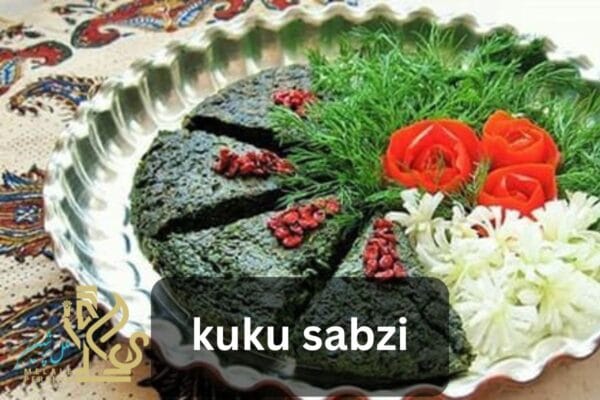
Other traditional Nowruz meals include kuku sabzi, a fragrant herb omelet symbolizing growth and prosperity, and rešte polo, a rice dish with noodles that signifies destiny and success in the year ahead. These flavorful dishes bring families together to celebrate the joy of Nowruz.
Nowruz Festival and Its Recognition by UNESCO
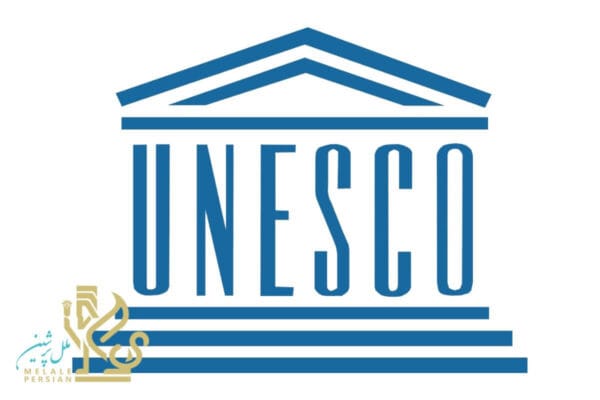
The Nowruz Festival is more than just a celebration; it’s a 3,000-year-old tradition that unites millions across different cultures. Its deep historical and cultural significance led to its global recognition as an intangible cultural heritage by UNESCO.
Why Nowruz is a UNESCO-Recognized Cultural Heritage
In 2010, UNESCO officially recognized Nowruz as part of humanity’s shared cultural heritage. This acknowledgment highlights the festival’s values of peace, renewal, and unity, emphasizing its importance beyond national borders.
The Global Impact of Nowruz Festival
Nowruz fosters cultural exchange and mutual respect among nations. Celebrated in over 15 countries, it promotes environmental awareness, social harmony, and the preservation of ancient traditions, making it one of the most meaningful global festivals today.
How Nowruz Has Evolved in Modern Times

The Nowruz Festival has adapted to the modern world while preserving its deep-rooted traditions. From ancient Persian rituals to contemporary celebrations, Nowruz continues to thrive, evolving with societal and technological changes.
Nowruz in the Digital Age and Social Media
With the rise of social media, Nowruz has become more accessible and widespread. Families and friends share their haft-sin tables, festive meals, and well wishes online, allowing the diaspora to stay connected. Virtual celebrations, online gift-giving, and digital Nowruz events have made it easier for people worldwide to participate in the festival.
Changes in Nowruz Traditions Over Time
While many Nowruz customs remain intact, some have evolved. In the past, house visits were a key part of the celebrations, but today, many people exchange video calls and online greetings instead. Some younger generations simplify traditional haft-sin displays, and modern Nowruz events often include concerts, public festivals, and digital experiences, reflecting a blend of tradition and modernity.
How to Celebrate Nowruz Festival at Home: A Guide for Beginners
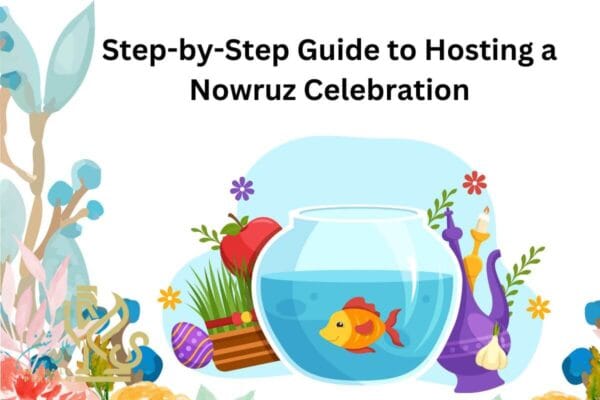
Celebrating the Nowruz Festival at home is a wonderful way to embrace Persian culture and welcome the new year with joy and positivity. Whether you have Persian roots or simply want to experience this ancient tradition, you can create a meaningful and festive atmosphere right in your home.
Step-by-Step Guide to Hosting a Nowruz Celebration
- Set Up a haft-sin Table – Arrange seven symbolic items, each representing a different aspect of life, such as sabze (sprouts for renewal) and sir (garlic for health).
- Spring Cleaning (xāne tekāni) – Clean your home to start fresh and invite positive energy.
- Prepare Traditional Nowruz Dishes – Cook sabzi polo bā māhi (herbed rice with fish) or kuku sabzi (herb frittata) to enjoy a festive meal.
- Light Candles & Welcome the New Year – As the exact moment of Nowruz arrives, gather with loved ones, make wishes, and celebrate renewal.
- Exchange Gifts & Visit Loved Ones – If possible, visit family and friends or connect virtually to share blessings for the new year.
- Celebrate sizdah bedar – On the 13th day of Nowruz, spend time outdoors, enjoy nature, and symbolically release negativity.
By following these steps, you can experience the Nowruz Festival in an authentic and meaningful way, bringing joy, renewal, and togetherness into your home.
Nowruz Festival 2025 Events & Celebrations Worldwide
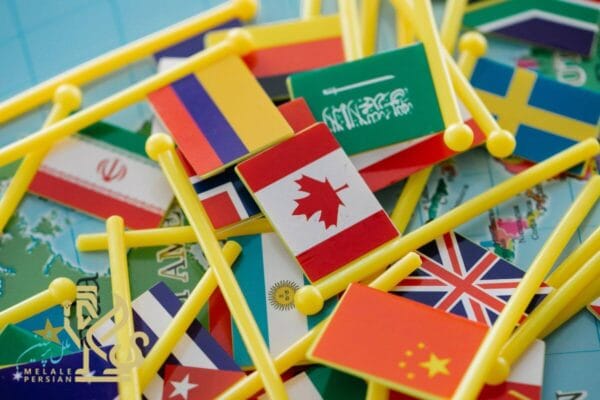
The Nowruz Festival 2025 will be celebrated with grand events and cultural gatherings in various countries. From traditional performances to modern festivities, communities worldwide will come together to honor this 3,000-year-old tradition.
Major Nowruz Events Around the World
- Iran – Cities like Tehran and Shiraz host large Nowruz celebrations with music, dance, and fireworks.
- Central Asia (Uzbekistan, Tajikistan, and Kazakhstan) – Public festivals, parades, and traditional sports take place.
- United States & Canada – Persian communities hold Nowruz bazaars, concerts, and cultural showcases.
- Europe (Germany, France, UK) – Various Nowruz festivals include storytelling, art exhibitions, and Persian cuisine.
Nowruz Greetings
Exchanging heartfelt greetings is a key part of the Nowruz Festival, as people share wishes for health, happiness, and prosperity.
Essential Nowruz Greetings and Their Meanings
- “Nowruz mobārak!” – Happy Nowruz!
- “sāle no mobārak!” – Happy New Year!
- “eyd-e šomā mobārak!” – Wishing you a blessed festival!
- “sad sāl be in sāl-hā!” – Wishing you 100 more Nowruz celebrations!
The Spiritual & Philosophical Meaning of Nowruz Festival
Beyond its celebrations, Nowruz Festival carries deep philosophical and spiritual significance, symbolizing renewal, rebirth, and balance. It aligns with the spring equinox, reminding us of nature’s harmony and the opportunity to start anew.
The Deeper Messages of Nowruz
- Renewal & Self-Improvement – Nowruz encourages individuals to reflect on the past and embrace new beginnings.
- Balance & Harmony – As day and night become equal, Nowruz symbolizes equilibrium in life.
- Family & Unity – It strengthens bonds between loved ones through shared traditions and gatherings.
Nowruz and the Persian Calendar: A Unique System
Unlike the Gregorian calendar, Nowruz follows the Solar Hijri calendar, making it one of the most precise timekeeping systems in the world.
How Nowruz Falls on the Same Date Every Year
Nowruz always occurs on the spring equinox, which usually falls on March 20 or 21, depending on astronomical calculations. In 2025, Nowruz will be celebrated on March 20 at 10:01 AM UTC. This unique system ensures Nowruz remains aligned with nature’s cycle.
Conclusion: Why Nowruz Festival Continues to Thrive After 3,000 Years
Despite its ancient roots, the Nowruz Festival remains a cherished celebration, adapting to modern times while preserving its core traditions.
The Future of Nowruz Festival
- Digital Celebrations – With social media, Nowruz is now celebrated globally through virtual gatherings.
- Cultural Recognition – More countries officially recognize Nowruz, promoting awareness and appreciation.
- Generational Continuity – Families pass down Nowruz customs, ensuring its legacy for centuries to come.
The Nowruz Festival is more than just a celebration; it’s a bridge connecting the past, present, and future through cultural heritage, renewal, and joy.




